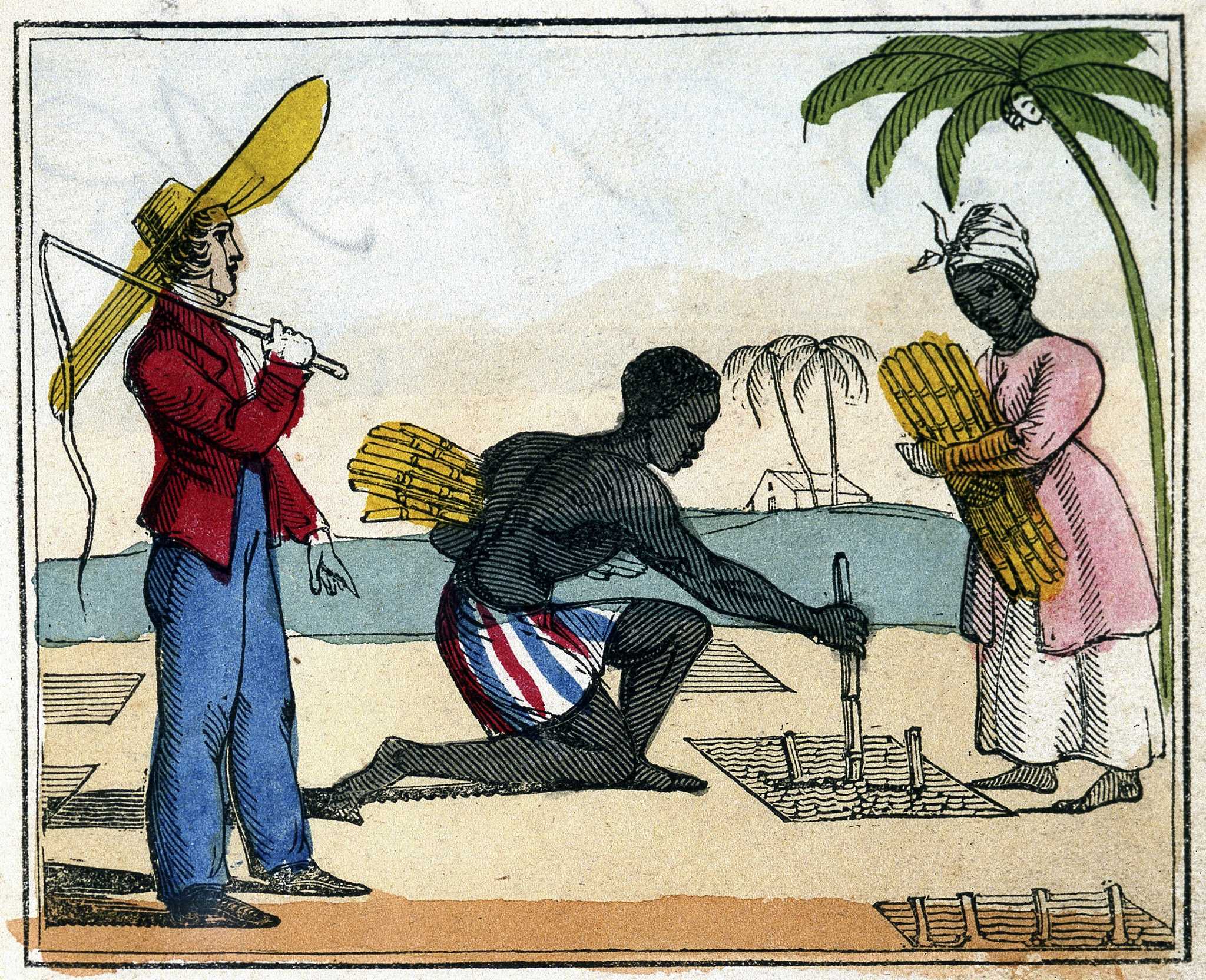Chapter 4
1514–1866, The Transatlantic Slave Trade
The Transatlantic Slave Trade was the largest forced migration of people in world history. Profits from the sale of enslaved humans and their labor laid the economic foundation for Western Europe, the Caribbean, and the Americas. The human cost was the immense physical and psychological toll on the enslaved. Their lives were embedded in every coin that changed hands, each spoonful of sugar stirred into a cup of tea, each puff of a pipe, and every bite of rice.

O, ye nominal Christians! Might not an African ask you—Learned you this from your God, who says unto you, Do unto all men as you would men should do unto you?
Olaudah Equiano, 1789
The Human Cost
Yoruban Ife Head Sculpture
The average lifespan of enslaved Africans who worked on colonial sugar and rice plantations was seven years. Extreme physical demands relied on equally extreme instruments of torture to ensure control over enslaved peoples and to protect plantation profits. The economies and societies they built were denied to them, along with human dignity.
Enslaving a Person
Enslavement of Africans was a long process that began at the moment of capture and extended through a series of ordeals leading to the plantation fields or some other forced service. Each step of the process magnified the inhumaneness of Western Atlantic enslavement. Scholars estimate that of every group of 100 people seized in Africa, only 64 would survive the march from the interior to the coast; only 57 would board ship; and just 48 would live to be placed in slavery in the Americas.
Packing
Hull of Slave Ship, Loose Packing vs. Tight Packing
Men, women, and children were packed in the hulls of ships, often chained two-by-two, in tight spaces that made sitting or standing impossible. Slave traders loaded their ships differently. Some packed enslaved people together as tightly as possible, counting on the larger number to make up for the loss of life, and profit, on the voyage. Others compressed their human cargo less, hoping that more people would survive and yield more profit at the journey’s end.

If a ship is properly constructed . . . I have found . . . that she carried more than two to a ton—sometimes more, depending on the number of small slaves.
James Jones, 1788
Handling
Violence at Sea
The shipboard experience was a matter of life and death. Enslaved African people were kept in horrific conditions: they lay in their own excrement, the women were raped, and all faced the risk of disease. The sick or deceased were thrown overboard to the sharks that regularly followed the ships. Some found freedom in suicide while others held onto their humanity despite the most inhumane conditions on the months-long journey.

The deck . . . was so covered with blood and mucus . . . that it resembled a slaughterhouse.
Alexander Falconbridge, 1788
Selling
People for Purchase
Once slave ships reached land, preparations began for the sale of the human cargo. The sick and weak were separated from people considered sound. Enslaved Africans were washed, fed, and oiled to give a good showing at auction. Many were sold from the auction block. Others were sold by “scramble”—slave dealers paid a flat fee to rush through the slave pens and grab the inventory they wanted. They competed for the best stock, to the shock and fear of the enslaved African people.

I was bought . . . for four gallons of rum, and a piece of calico, and called VENTURE . . . his having purchased me with his own private venture.
Venture Smith, 1789
Consuming
Seasoning
Once purchased, enslaved men, women, and children faced a process called “seasoning,” which many did not survive. Seasoning involved adjusting to a new climate while learning a brutal work routine with little food and clothing. Under enslavers’ violent control, Africans were forced to speak European languages and to control behavior and emotions. Enslaved people were then put to work, usually for the rest of their lives, clearing land, cultivating cash crops, and serving their enslavers.

Africans . . . are conveyed to the plantations, and are put to their respective work. . . . Calculations are accordingly made upon their lives.
Thomas Clarkson, 1788
Olaudah Equiano
The Interesting Narrative of the Life of Olaudah Equiano, or Gustavus Vassa, the African
Olaudah Equiano was born a free African in the Benin region of western Africa. The son of a community leader, Equiano was kidnapped from his homeland and sold into slavery. He secured his freedom and went on to write a compelling personal account of his life. His narrative was published in 1789. His story of sorrow, brutality, and resilience offered a deeper understanding of the human cost of the slave trade and helped to mobilize opinion against it.
Scholars differ on the origins of Equiano’s account. The debate centers on whether Equiano’s narrative is based on his first-had account or is a composite of experiences from several enslaved people who spoke directly with him. Despite the ongoing debates, it is clear that Olaudah Equiano’s narrative is one of the few surviving and important accounts of the Transatlantic Slave Trade that speaks to the experiences of African people, as told through their own voice.

Surely this traffic cannot be good, which spreads like pestilence, and taints what it touches!
Olaudah Equiano, 1789
